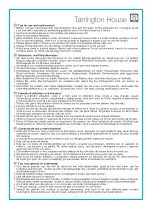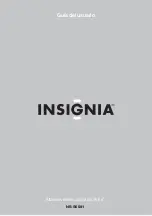
BEFORE INSTALLATION
Installation Considerations
New Construction – Unfinished Walls
Finished Walls
5
NOTE:
To avoid possible damage to the pivoting tweeters, read the section entitled “SPEAKER
ADJUSTMENTS” on Page 7 in this manual prior to performing the tweeter adjustment.
Before installing your speakers into the wall, you should consider the placement carefully, taking
into account the location of electrical, plumbing and other fixtures.
A pre-construction bracket may be installed prior to drywall application across studs (up to 16
″
on-center) where a speaker will be located. After the hole is cut and the drywall is installed, the
speakers are then easily installed following the instructions for mounting in “Finished Walls” below.
Prior to the actual installation of the speakers, it
will be necessary to run cables to the speaker
locations. Please check with installer/dealer for
more information about cable installation. After
the cable has been properly installed, you are
ready to mount the speakers.
Following the simple steps listed below will
result in a professional looking installation:
• Determine the best area to mount your
speakers. This area of the wall should be free of
obstructions such as electrical conduit,
HVACducts, or water lines. This can best be
determined by noting the placement of fixtures
and gaining access to an attic or crawl space for
further analysis of the location of such
obstacles.
• Find the studs nearest the desired speaker
mounting location. We highly recommend using
a good stud-finder tool for this procedure. If you
are lining up the speakers to some other object
or molding in the room, make sure you consider
the size of the baffle, which extends beyond the
mounting hole.
• Mark the hole. A template of the IW-680CF
included in the box. position the template in the
desired position and pencil an outline on the
wall.
• Cutting the hole. CAUTION: This is the most
important part of the entire installation. If you are
not certain whether any obstructions exist
behind the desired mounting area, you should
start by cutting a small hole in the center of your
penciledmounting hole with a drywall saw. Cut at
a 45˚ angle towards the inside of the hole.
Cutting the small hole at this angle will make
drywall repair much easier, using the piece cut
out. Once you have determined there aren’t
anyobstructions in your desired mounting
location, start cutting the finished hole at a 90˚
angle to the wall surface (See Diagram 3)




























